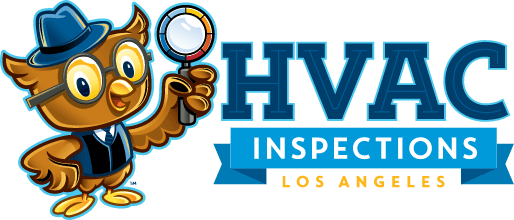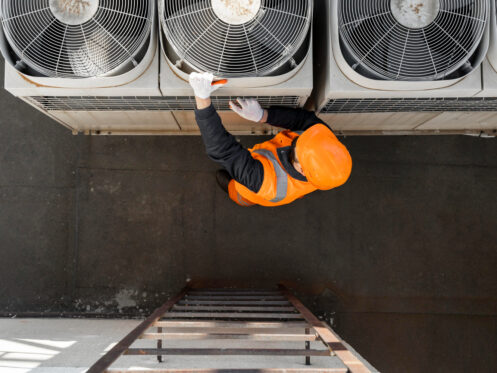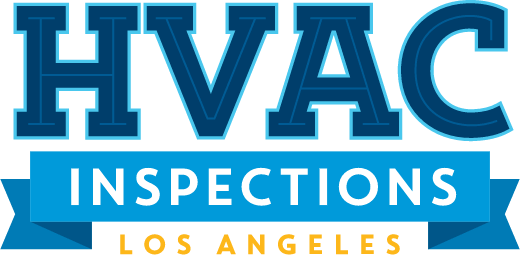Commercial HVAC systems are a major part of how a building in Santa Monica stays comfortable and functional throughout the summer. These systems handle a lot of demand, especially when outside temperatures stay high for weeks on end. Without the right care, that constant pressure can lead to breakdowns, making it harder to maintain a dependable indoor environment. Business owners and facility managers who rely on smooth HVAC operation need to take real steps to avoid sudden component failures that can disrupt operations and cost time.
Failures in HVAC systems usually do not happen overnight. They build up over time from small issues that go unnoticed. Ocean air, humidity, and long operating cycles all put stress on equipment. With regular attention, though, most breakdowns can be avoided entirely. Knowing the early risks and following through with preventative checks reduces disruptions and keeps the building running as intended.
Common Causes Of HVAC Component Failures
Even well-designed HVAC systems are affected by wear. Parts wear out, environmental factors impact system performance, and things like dust or moisture reach places they should not. In Santa Monica, where the ocean is not far off, salt air plays a major role in system aging. Components like coils and electrical parts are prone to corrosion and faster deterioration compared to buildings situated further inland.
Other common causes of HVAC component failure include:
1. Lack of regular cleaning, especially around coils and fan blades
2. Dirty or clogged filters reducing airflow
3. Electrical problems from worn wiring or blown fuses
4. Refrigerant leaks affecting cooling performance
5. Thermostat or sensor misreadings
6. Blocked drain lines causing water to back up
A commercial property near the coast could experience quicker condenser coil corrosion due to salt in the air. When this is not addressed early, cooling power drops, and over time it may cause compressor damage. These types of failures happen gradually, so they can escape notice if warning signs are missed.
Strange sounds, uneven cooling, or sudden increases in energy use signal stress within the system. These may indicate that specific components are damaged but still functioning for the time being. Staying informed about what degrades and why helps property teams resolve issues early and avoid emergencies.
Preventive Maintenance Practices
The difference between a system that runs smoothly and one that breaks down often comes down to how well it is maintained. A structured plan for preventive care extends the life of HVAC components and ensures reliability. Since commercial buildings in Santa Monica rely on cooling systems most of the year, staying ahead on maintenance reduces the risk of seasonal performance dips.
Key maintenance practices that prevent failures include:
– Changing or cleaning air filters on a consistent schedule
– Cleaning evaporator and condenser coils to avoid overheating
– Inspecting for refrigerant leaks or signs of pressure imbalance
– Flushing and verifying that condensate drains are clear
– Checking the accuracy of sensors and thermostats
– Tightening electrical connections and looking for corrosion
These actions catch early signs of wear, especially during times when the system is not under heavy use. By addressing needs before peak season hits, maintenance teams fix problems quickly and prevent them from spreading. These off-peak service windows may also offer shorter wait times for technician visits.
Regular inspections from our professionals support this strategy by identifying problem areas that building teams may overlook. Tailoring the timing and frequency of maintenance to equipment age, size, and hours of operation is key. Prioritizing checks before summer leads to fewer breakdowns and more consistent service across all parts of the building.
Upgrading And Replacing Aging Components
No matter how well a system is cared for, components have limited lifespans. When older parts are left in use too long, the chances of unplanned outages rise, especially during critical periods. Santa Monica buildings face higher demands in warmer months, which pushes older parts to their limit. Deciding when to replace components can be the difference between a planned upgrade and an expensive service disruption.
Parts that often need attention include:
– Compressors: These are critical to air cooling. When failing, they often result in full system outages and need immediate action.
– Motors and fans: These manage airflow. Faults or speed changes affect comfort and may damage other parts. Burnout risks should be monitored for safety.
– Coils: With coastal air exposure, coils corrode and become less efficient, increasing the strain on the entire system.
– Sensors and thermostats: When these malfunction, temperature regulation suffers. The system may cycle incorrectly or run longer than needed.
– Contactors and relays: These manage system start and stop commands. Failures can result in inconsistent system response and strain on connected parts.
Replacing these important parts before they fail outright helps prevent sudden discomfort or safety concerns in commercial spaces. For instance, if a rooftop HVAC system starts using more power without obvious performance changes, the compressor or fan motor may be weakening. Tackling the issue early keeps tenants cool and building operations stable when it matters most.
Benefits Of Professional HVAC Inspections
Facility teams can manage preventative upkeep well, but only trained specialists identify issues that require deeper investigation. Experience and diagnostic tools used during professional inspections uncover problems that are not visible during routine checks. Santa Monica adds another layer of complexity due to exposure to salt air and moisture that accelerates corrosion.
During professional inspections, our technicians look for:
– Hidden corrosion or rust that affects performance over time
– Electrical wear, including weak breakers or damaged wiring
– Blocked or slow-draining condensate lines that can cause leaking
– Refrigerant issues that reduce cooling capacity
– Fan or blower irregularities affecting air output
Each inspection includes tests on safety sensors, belts, bearings, insulation condition, and alignment of moving parts. If any of these minor components fail, they usually burden other system elements and cause a chain of additional wear.
Timing also plays a role. Conducting inspections during mild months prepares the building for more intense use later. Identifying risks before summer preserves comfort and helps avoid interruption during high-demand weeks. Knowing the system is ready for the season gives building managers fewer concerns and better control over energy costs and comfort expectations.
Keeping HVAC Systems Reliable All Year
Commercial HVAC systems in Santa Monica operate under ongoing heat stress and exposure to coastal air conditions. These elements create steady pressure on all system parts, especially during extended use in hotter months. Without consistent inspections and maintenance, minor wear and buildup can grow into larger failures that affect business operations and indoor comfort.
Whether it is an office building or customer-facing commercial space, staying on top of system performance helps avoid setbacks. Preventing HVAC component failures comes down to awareness and preparation. That means working from a seasonal maintenance plan, replacing failing parts before full breakdowns occur, and relying on our professionals to detect faults early.
When building managers stay proactive with service and inspections, systems operate more efficiently and fail less often. That leads to steadier comfort levels, fewer tenant complaints, and better energy use. A little preparation ahead of time ensures that HVAC systems can keep up with demand throughout the year, especially as the weather heats up and cooling needs increase. Keeping everything running as expected ultimately brings extra confidence and fewer disruptions in high-demand periods.
HVAC Inspections Los Angeles understands that staying ahead of HVAC issues is essential for keeping your property cool and efficient through long summer months. A professional commercial HVAC inspection in Santa Monica helps ensure your system remains reliable while minor concerns are addressed before they become major problems. For a quick estimate or to book a service visit, please contact us today.






